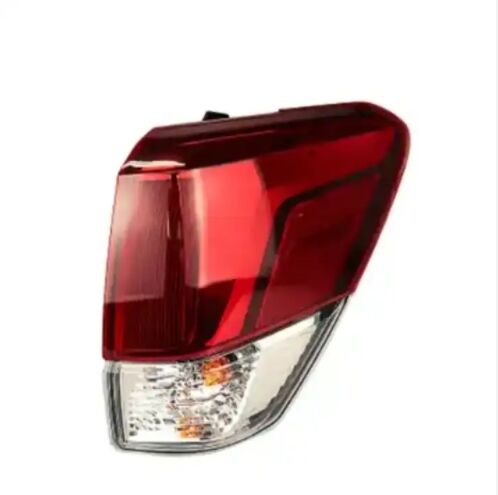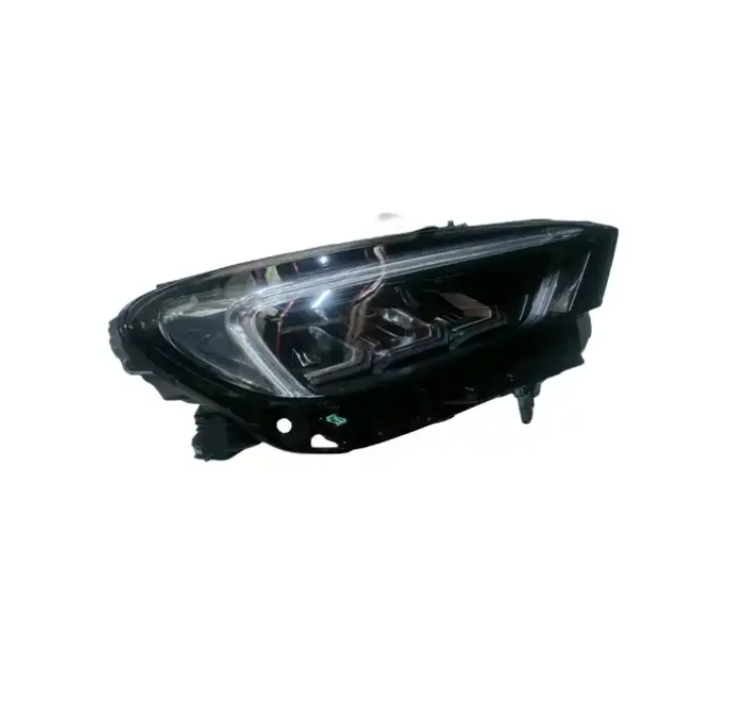How Does a Taillight Improve Safety on the Road?
A taillight is one of the most important safety features on any vehicle. While it may seem simple—just a red light at the back—it plays a critical role in preventing accidents by helping drivers communicate with each other. Every time you turn on your car, brake, or signal a turn, your taillight sends clear messages to other road users. Let’s explore how taillights make roads safer, from basic functions to advanced features.
1. Makes Your Vehicle Visible to Others
The most basic job of a taillight is to make your car visible to drivers behind you, especially in low light or bad weather.
- Low-light visibility: When the sun sets, on cloudy days, or in tunnels, it’s hard to see other cars. Taillights glow red, a color that stands out even in dim conditions. This lets drivers behind know you’re there, so they can keep a safe distance. Without taillights, a car could blend into the dark, leading to rear-end collisions.
- Bad weather performance: Rain, fog, and snow make it harder to see. Taillights cut through these conditions better than other lights because red light scatters less in moisture. For example, in fog, a taillight’s red glow stays focused, while white headlights might bounce off the fog and create glare. This ensures other drivers can spot your car from farther away.
- Daytime visibility: Even in sunlight, taillights help. They make your car stand out in busy traffic, where there are many vehicles, colors, and movements. A bright taillight ensures drivers don’t miss your car when changing lanes or merging.
Simply put, taillights act like a “look at me” signal, ensuring your car is never invisible to others.
2. Signals Your Intentions to Prevent Confusion
Drivers can’t read your mind, but taillights tell them what you’re about to do—stop, turn, or slow down. This prevents confusion and crashes.
- Brake lights: When you press the brake pedal, bright red lights in the taillights turn on. This signals drivers behind to slow down. Modern cars have two brake light brightness levels: bright for hard stops and slightly dimmer for gentle slows. This helps others judge how quickly they need to react.
- Turn signals: The left or right part of the taillight blinks to show you’re turning. Newer cars use sequential turn signals—lights that flash in a wave from the center to the edge—making the direction clearer. For example, a right turn signal might start blinking near the middle of the taillight and move toward the right, so drivers instantly know which way you’re going.
- Hazard lights: When both taillights blink at the same time, it means your car is stopped or in trouble (like a breakdown). This warns other drivers to go around you carefully, reducing the risk of a crash.
By signaling your moves, taillights turn chaotic traffic into a more organized flow, where everyone understands each other’s actions.
3. Reduces Rear-End Collisions
Rear-end collisions are one of the most common types of accidents, but taillights help prevent them by giving drivers time to react.
- Early warning: A bright brake light lets drivers behind know you’re stopping before they see your car slow down. This extra time—even a split second—lets them hit their brakes sooner. At highway speeds, a 1-second warning can mean the difference between stopping safely and crashing.
- Distance judgment: Taillights help drivers judge how far behind you they are. If your taillights are close together, a driver knows they’re too near and should back off. If they’re far apart, they can tell they have space to maintain speed.
- Visibility in traffic jams: In stop-and-go traffic, taillights act like a chain—each car’s brake lights tell the one behind to slow down. This ripple effect prevents pile-ups, where one crash causes others because drivers didn’t react in time.
Studies show that cars with bright, clear taillights are 30% less likely to be rear-ended than those with dim or broken lights.
4. Advanced Features for Extra Safety
New technology has made taillights even better at preventing accidents, with smart features that adapt to situations.
- Adaptive brightness: Taillights that get brighter in sunlight (so they stand out) and dimmer at night (to avoid blinding others). This ensures they’re always effective without causing glare.
- Emergency braking signals: When you hit the brakes very hard, some taillights flash rapidly. This “panic signal” tells drivers behind you’re stopping suddenly, so they can brake harder or swerve to avoid a crash.
- Blind spot warnings: Some taillights work with sensors to flash when a car is in your blind spot. This warns drivers next to you that you might not see them, preventing lane-change crashes.
- Communication with autonomous cars: Self-driving cars use cameras and sensors to “read” taillights, just like human drivers. Bright, clear taillights help these cars understand your actions faster, making autonomous driving safer.

These features turn taillights into active safety tools, not just passive signals.
5. Legal Requirements Ensure Minimum Standards
Governments around the world have rules about taillights—how bright they must be, what color they are, and how they should work. These laws ensure every car has at least basic safety features.
- Color and brightness: Taillights must be red (or amber for turn signals) because these colors are easiest to see. They must be bright enough to be visible from at least 500 feet (150 meters) away—far enough for drivers to react.
- Number of lights: Most cars have two taillights (left and right) so drivers can tell how wide your car is. This helps them judge if there’s enough space to pass or merge.
- Durability: Taillights must work in rain, snow, and extreme temperatures. They can’t break easily from bumps or vibrations, ensuring they’re always reliable.
These rules mean even the cheapest cars have taillights that meet basic safety standards, protecting everyone on the road.
FAQ
What happens if a taillight is broken?
Driving with a broken taillight is illegal in most places—it’s dangerous because other drivers can’t see you properly. You might get a ticket, and you’re more likely to be in an accident. Always fix broken taillights right away.
Do brighter taillights mean better safety?
Not always. They need to be bright enough to see but not so bright they blind drivers behind. Modern taillights balance brightness with comfort, using LEDs that are bright but not glaring.
Can taillights be too dim?
Yes. Dim taillights (from old bulbs or dirty lenses) are hard to see, increasing crash risks. Clean your taillights regularly, and replace bulbs when they start to dim.
Why are taillights red?
Red is easy to see in all conditions and doesn’t blend with other lights (like white headlights). It also signals “stop” or “caution” in many cultures, making it a natural choice for safety signals.
Do electric cars have different taillights?
They work the same way but often use advanced features like full-width light bars or animations. EVs also have taillights that stay on when the car is parked, making them more visible in dark lots.

